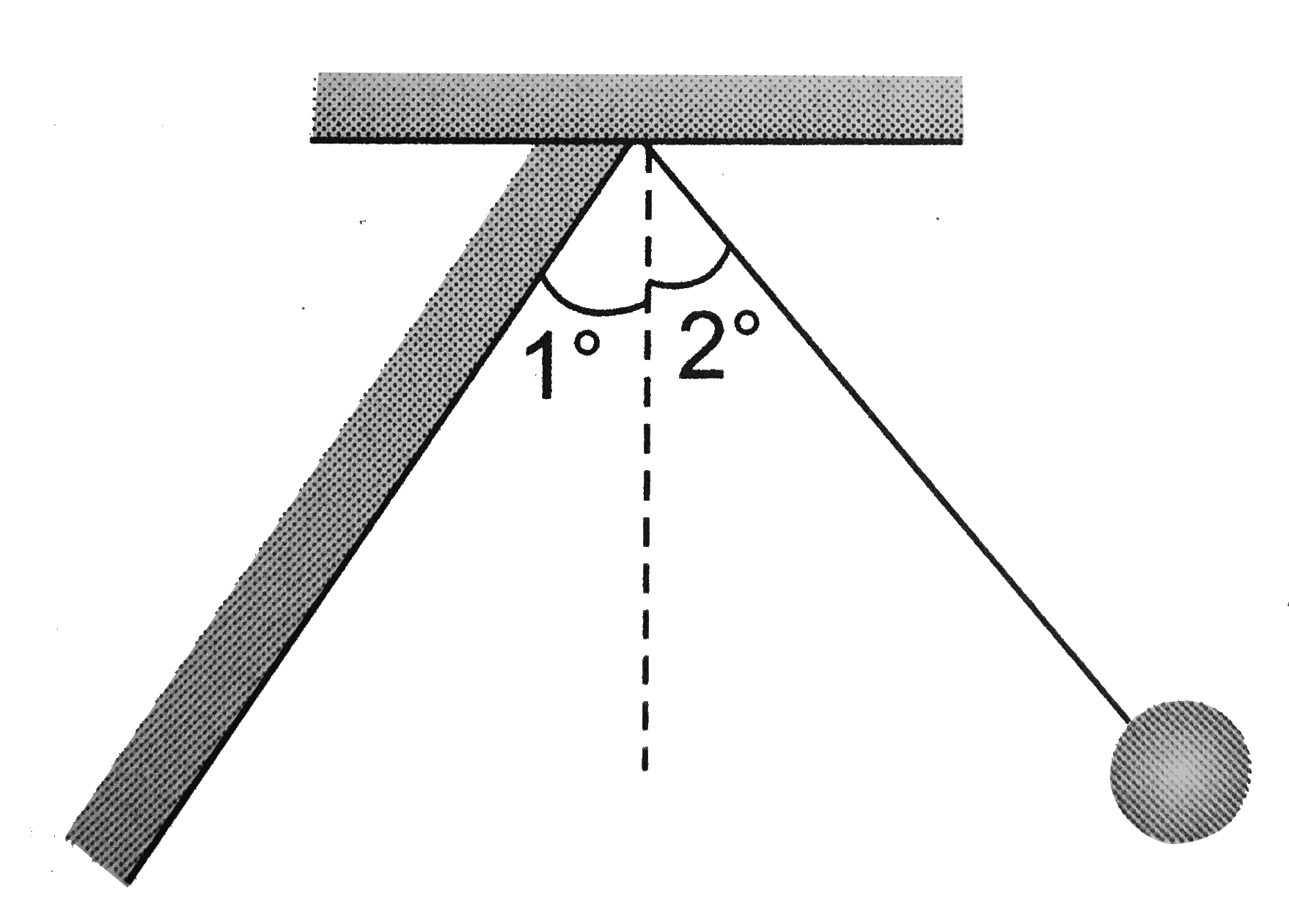Attempt any SIX :
A simple pendulum of length 1 m and mass 10 g oscillates freely with amplitude 2 cm. Find its potential energy (P.E.) at the extreme position. (g=9.8m/s2)
To find the potential energy (P.E.) of a simple pendulum at its extreme position, we can follow these steps:
Step 1: Understand the formula for potential energy in a simple harmonic motion (SHM)
The potential energy (P.E.) of a mass in SHM can be expressed as:
P.E.=12mω2x2
where:
- m is the mass of the pendulum,
- ω is the angular frequency,
- x is the displacement from the mean position.
Step 2: Identify the parameters given in the problem
From the problem, we have:
- Length of the pendulum, l=1m
- Mass of the pendulum, m=10g=10×10−3kg
- Amplitude, A=2cm=2×10−2m
- Acceleration due to gravity, g=9.8m/s2
Step 3: Calculate the angular frequency (ω)
The angular frequency for a simple pendulum is given by:
ω=√gl
Substituting the values:
ω=√9.81=√9.8≈3.13rad/s
Step 4: Substitute values into the potential energy formula
At the extreme position, the displacement x is equal to the amplitude A:
P.E.=12mω2A2
Substituting the known values:
P.E.=12×(10×10−3)×(3.13)2×(2×10−2)2
Step 5: Calculate the potential energy
Calculating ω2:
ω2≈(3.13)2≈9.86
Calculating A2:
A2=(2×10−2)2=4×10−4
Now substituting these values into the P.E. formula:
P.E.=12×(10×10−3)×9.86×(4×10−4)
=12×10−2×9.86×4×10−4
=1.96×10−5J
Final Answer
The potential energy at the extreme position is:
P.E.≈1.96×10−5J
---
The potential energy (P.E.) of a mass in SHM can be expressed as:
P.E.=12mω2x2
where:
- m is the mass of the pendulum,
- ω is the angular frequency,
- x is the displacement from the mean position.
From the problem, we have:
- Length of the pendulum, l=1m
- Mass of the pendulum, m=10g=10×10−3kg
- Amplitude, A=2cm=2×10−2m
- Acceleration due to gravity, g=9.8m/s2
The angular frequency for a simple pendulum is given by:
ω=√gl
Substituting the values:
ω=√9.81=√9.8≈3.13rad/s
At the extreme position, the displacement x is equal to the amplitude A:
P.E.=12mω2A2
Substituting the known values:
P.E.=12×(10×10−3)×(3.13)2×(2×10−2)2
Calculating ω2:
ω2≈(3.13)2≈9.86
Calculating A2:
A2=(2×10−2)2=4×10−4
Now substituting these values into the P.E. formula:
P.E.=12×(10×10−3)×9.86×(4×10−4)
=12×10−2×9.86×4×10−4
=1.96×10−5J
The potential energy at the extreme position is:
P.E.≈1.96×10−5J
Topper's Solved these Questions
- BOOK - GURUKUL PUBLICATION - MAHARASHTRA PREVIOUS YEAR PAPERSCHAPTER - JULY 2018EXERCISE - SECTION-II21videos
JULY 2018
- BOOK - GURUKUL PUBLICATION - MAHARASHTRA PREVIOUS YEAR PAPERSCHAPTER - JULY 2017EXERCISE - SECTION-I12videos
JULY 2017
- BOOK - GURUKUL PUBLICATION - MAHARASHTRA PREVIOUS YEAR PAPERSCHAPTER - MARCH 2015EXERCISE - SECTION-II21videos
MARCH 2015
Similar Questions
The bob of a simple pendulum of length 1 m has mass 100 g and a speed of 1.4 m/s at the lowest point in its path. Find the tension in the stirng at this instant.
View SolutionSuppose the amplitude of a simple pendulum having a bob of mass m is θ0. Find the tension in the string when the bob is at its extreme position.
View Solution
Knowledge Check
- Question 1 - Select One
A simple pendulum of length 'L' has mass 'M' and it oscillates freely with amplitude energy is
(g = acceleration due to gravity)AMgA22LBMgA2LCMgA2LD2MgA2L - Question 2 - Select One
A simple pendulum of length 1 m, and energy 0.2 J, oscillates with an amplitude 4 cm. When its length is doubled then the energy of oscillation will be
A0.04 JB0.1 JC0.02 JD0.8 J - Question 3 - Select One
A simple pendulum of length 'L' has mass 'M' and it oscillates freely with amplitude energy is
(g = acceleration due to gravity)AMgA22LBMgA2LCMgA2LD2MgA2L
A simple pendulum of length 1m is allowed to oscillate with amplitude 2∘. it collides at T to the vertical its time period will be (use g=π2)
 View Solution
View SolutionA simple pendulum of length 1 m with a bob of mass m swings with an angular amplitude 30∘. Then (g=9.8m/s2
View SolutionA simple pendulum of length 1 m with a bob of mass m swings with an angular amplitude 30°. Then (g = 9.8 ms−2)
View SolutionA simple pendulum of length 98cm has amplitude of 2√10 cm. Taking g=9.8m/s2, its maximum velocity will be
View SolutionA mass of 20 kg is at a height of 8 m above the ground. Then the potential energy possessed by the body is:
[Given g=9.8ms−2]View Solution
